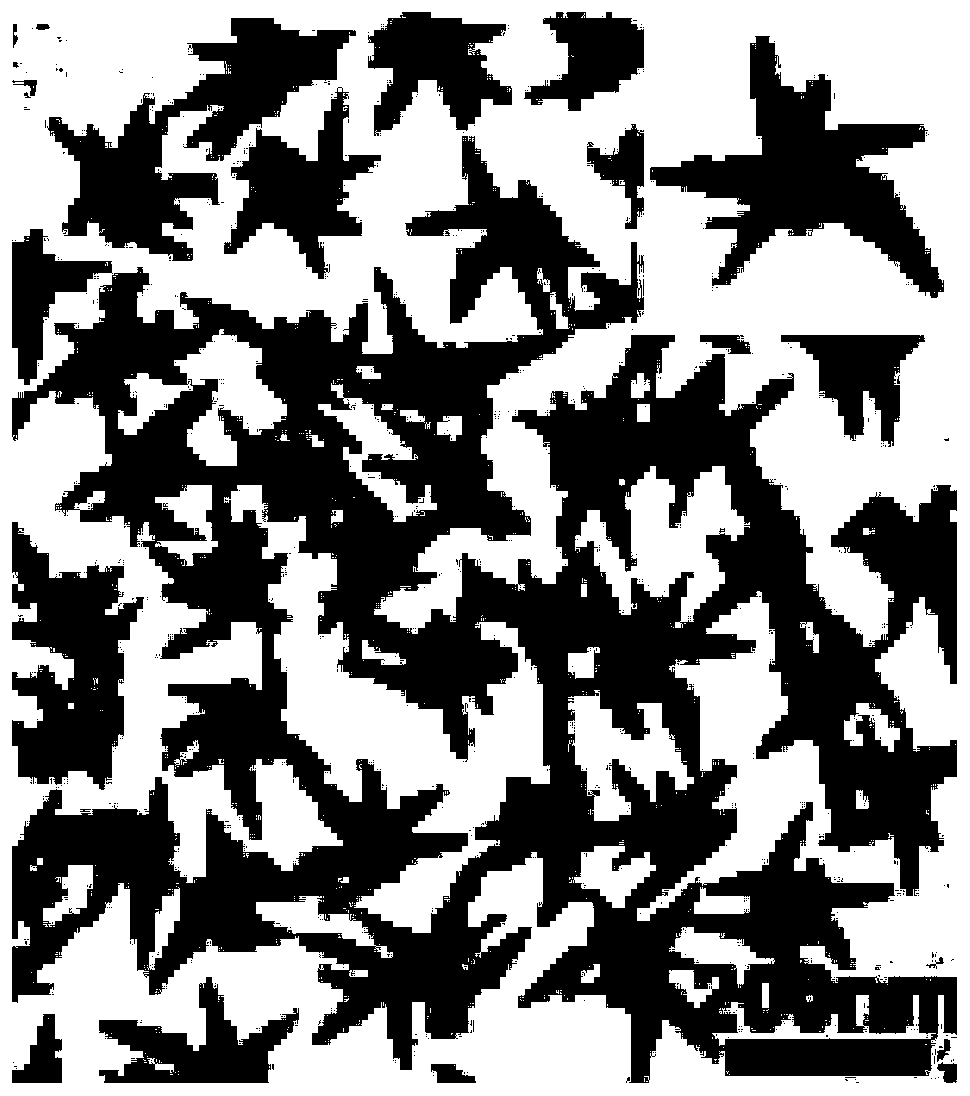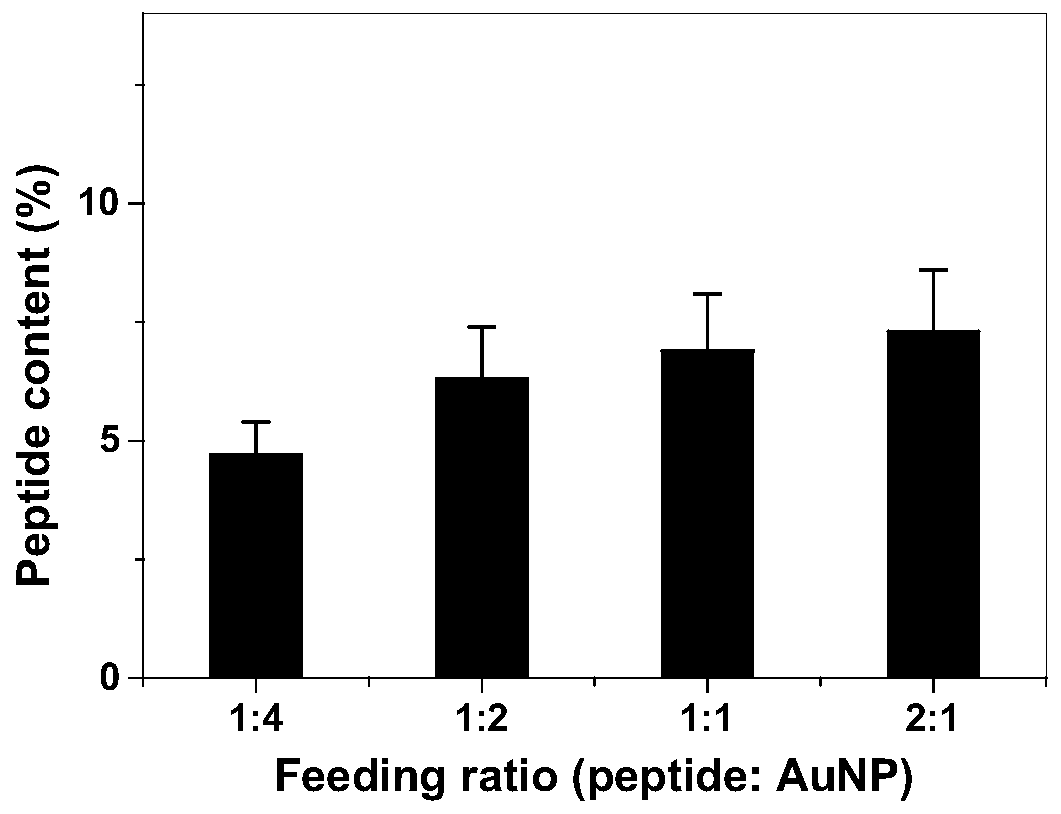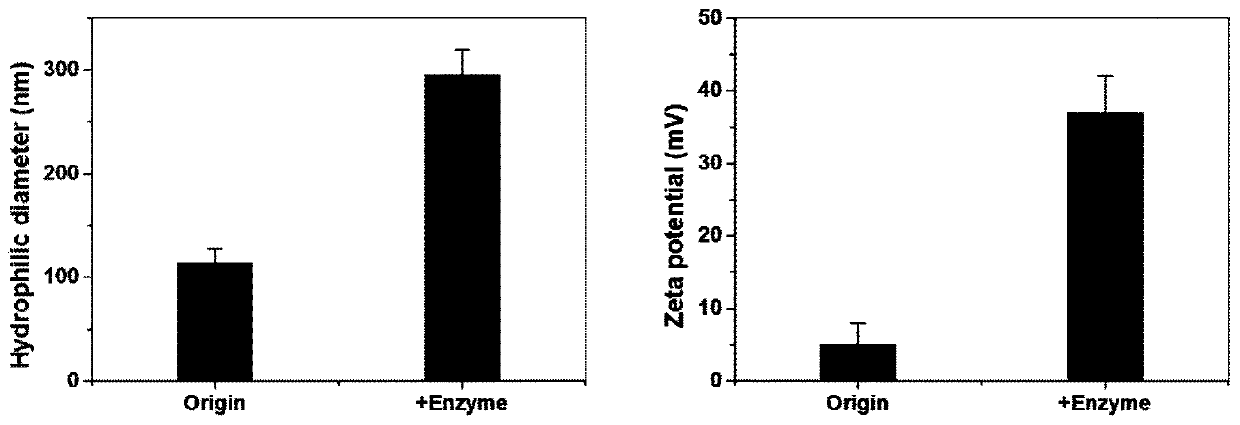Gold nanoflower with liver cancer targeting and radiotherapy sensitivity characteristics and preparation and application thereof
A technology of gold nanoflowers and gold nanorods, applied in the field of gold nanoflowers, can solve the problems of weak targeting cancer tissue and cells, low X-ray absorption efficiency of tumor cell endocytosis, and limited promotion and application, and achieves improved Enrichment degree and residence time, good radiotherapy sensitization, and the effect of increasing residence time
- Summary
- Abstract
- Description
- Claims
- Application Information
AI Technical Summary
Problems solved by technology
Method used
Image
Examples
Embodiment 1
[0038] 1) Add 360 μL of 0.01M glutathione solution to 1 mL (0.1 mM) of gold nanorods (self-prepared, with a size of 14×50 nm, see below for the method), stir vigorously at room temperature for 2 hours; then add 5.81 mL of cetyltrimethylammonium chloride (CTAC) at a concentration of 0.033 mM, 40 μL of HAuCl at a concentration of 25 mM 4 solution, 30 μL of 1 mM AgNO 3 Solution, 60 μL of ascorbic acid solution with a concentration of 100 mM. Stir vigorously at room temperature for half an hour and then stand overnight in a constant temperature water bath at 28° C. to obtain monodisperse gold nanoflower particles. Its transmission electron microscope pictures are shown in figure 1 .
[0039] Preparation of gold nanorods by seed growth method:
[0040] Preparation of gold seeds: 0.25 mL of 10 mM HAuCl 4 Add to 10mL 0.1M CTAB solution, then add 0.6mL 0.01M NaBH under vigorous stirring 4 , after continuing to stir vigorously for 2 minutes, it was left to stand in a water bath a...
Embodiment 2
[0048] Same as Example 1, the difference lies in step 2): take 10 mg of gold nanoflower particles obtained in step 1) and centrifuge to remove excess CTAC ligand, then disperse in 20 mg / mL polypeptide-polysarcosine solution, and place at 30°C Shake in a constant temperature water bath. Repeat this step one day later after removing the supernatant by centrifugation. The functionalized gold nanoflower particles were then collected by centrifugation. The content of polypeptide molecules on the surface of nanomaterials was analyzed by BCA kit, and the results can be found in figure 2 , showing that the mass of the polypeptide accounts for 7.9% of the nanomaterial.
Embodiment 3
[0050] Same as Example 1, the difference lies in step 2): Take 10 mg of citric acid-protected spherical gold nanoparticles (particle size 5-20 nm), disperse them in 5 mg / mL polypeptide-polysarcosine solution, and place them at a constant temperature of 30 ° C Shake in water bath. Repeat this step one day later after removing the supernatant by centrifugation. The functionalized gold nanospheres were then collected by centrifugation. The same dose of gold nanospheres (calculated according to the gold content) was injected into tumor-bearing nude mice, and radiotherapy was performed. See results Figure 7 , showing that the radiosensitization effect of gold nanospheres is worse than that of gold nanoflowers with the same responsive surface, indicating that gold nanoflowers have better radiosensitization effects.
PUM
| Property | Measurement | Unit |
|---|---|---|
| Diameter | aaaaa | aaaaa |
| Molecular weight | aaaaa | aaaaa |
Abstract
Description
Claims
Application Information
 Login to View More
Login to View More - Generate Ideas
- Intellectual Property
- Life Sciences
- Materials
- Tech Scout
- Unparalleled Data Quality
- Higher Quality Content
- 60% Fewer Hallucinations
Browse by: Latest US Patents, China's latest patents, Technical Efficacy Thesaurus, Application Domain, Technology Topic, Popular Technical Reports.
© 2025 PatSnap. All rights reserved.Legal|Privacy policy|Modern Slavery Act Transparency Statement|Sitemap|About US| Contact US: help@patsnap.com



